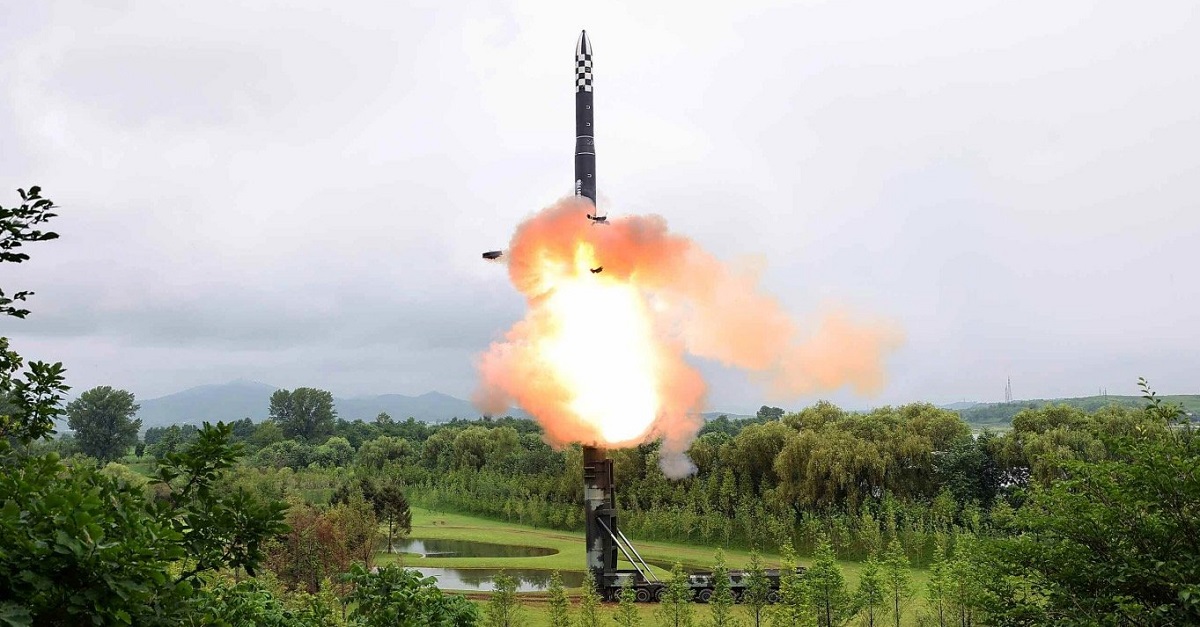North Korea successfully launched the nuclear-capable Hwasong-18 intercontinental ballistic missile, which has a maximum launch range of 15,000 km and altitude of 6648.4 km

North Korea continues to develop its missile programme. Recently, the DPRK successfully launched the Hwasong-18 intercontinental ballistic missile.
Here's What We Know
DPRK officials position the missile launch as responses to the US Air Force spy planes. Japan and South Korea, as usual, monitored the launch and gave their assessments.
The Hwasong-18 was launched towards Japan. The intercontinental ballistic missile climbed to an altitude of more than 6,000 kilometres and travelled approximately 1,000 kilometres before falling into the sea between Japan and the Korean Peninsula. It took 4491 seconds to do so, which means its average speed was 222.67 m/s.
Hwasong-18 is equipped with a solid fuel engine. Because of this, it is believed to be more difficult to intercept than previous intercontinental ballistic missiles used by North Korea.
The Hwasong-18 has a mass of 55-60 tonnes, a height of 25 metres and a diameter of 2 metres. North Korea's intercontinental ballistic missile can carry a warhead with a nuclear warhead weighing 1.25-1.5 tonnes.
As we wrote, the Hwasong-18 flew about 1,000 kilometres. The maximum launch range is about 15,000 kilometres. During the flight, the missile climbed to an altitude of nearly 6648.4 km to evade air defence systems. This is a record.
Source: KCNA